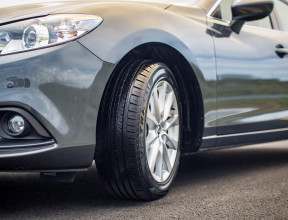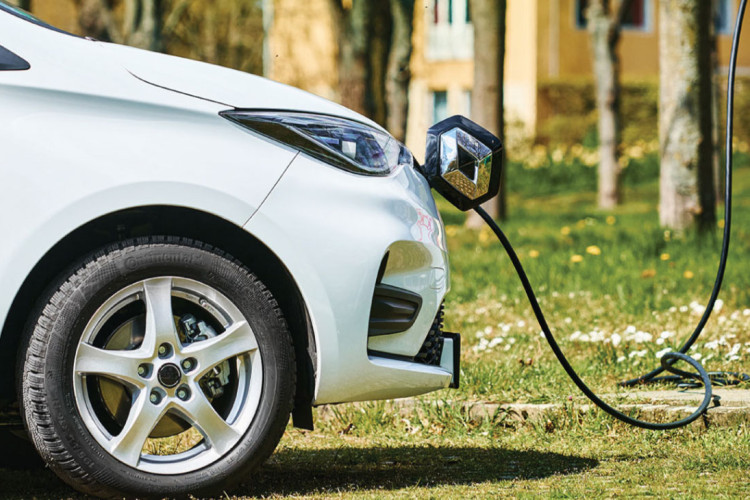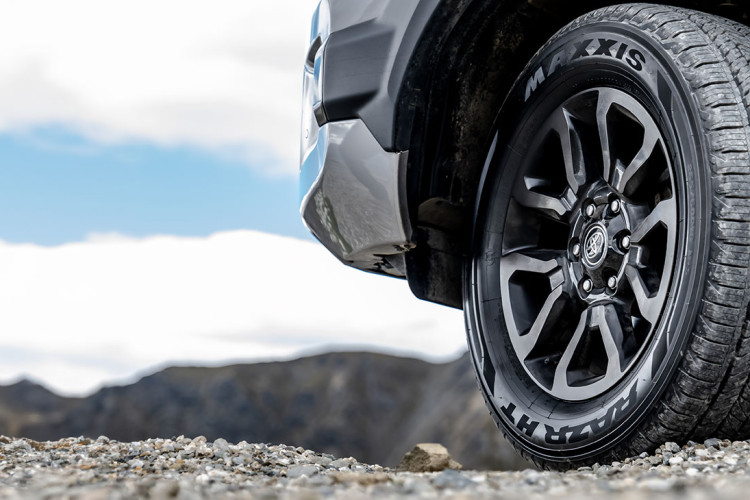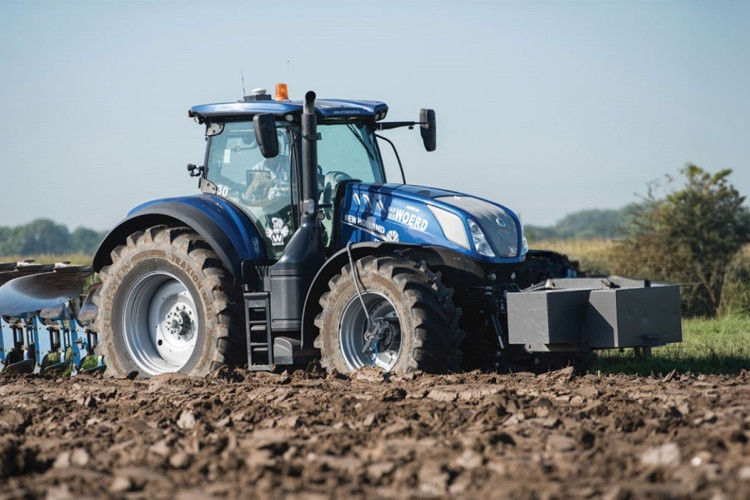Passing a WOF in New Zealand: 10 things to check before you take the car in
In England they call it an MOT. It’s an annual test for vehicle roadworthiness. If your vehicle doesn’t display an up to date MOT certificate in the windscreen you get in a bit of trouble. Traffic cameras can pick up any car travelling along the road without one. Also, UK police cars boast something called Automated Number Plate Recognition (ANPR). If the system picks up a vehicle without a valid MOT, it’ll alert the officers and before you know it you’ll see some blue lights behind you.
Let’s quickly divert to the land of the free. Which equates to the land of the ‘free from testing’ depending on where you’re driving. Yup, in the USA some states don’t require any safety test to be on the road. Some require a pretty basic check when a car is sold (some of these checks include tyres but not all of them). Some States require safety and smog checks. It’s all very complicated.
Luckily, in New Zealand we take vehicle safety a bit more seriously. Sure, getting a WOF can be annoying and people have different views about the system... but it’s purpose is a good one... to make the roads safe. As with all things, a bit of prior preparation can help. With that in mind, we’ve made a list of the 10 things you can check before taking your vehicle in. We can’t guarantee this will mean you pass your WOF but it might just help alert you to something ahead of time, saving the rush between a fail and a recheck.
Check Your Lights
It’s remarkably easy to drive around without your lights working properly. Sure, you should pick up any issues with the headlights. The rear lights or the indicators are a bit trickier. Unless someone spots the issue and tells you it’s highly likely you’ll never know. Until it’s WOF time that is. Then you’ll find out. The good news a lot of WOF testing centres will replace a bulb for you. Still, the lights shouldn’t be functioning purely for the purposes of passing a WOF. They need to be functioning so other motorists know where you are and what you’re doing (or intending to do). So, park up and get a mate to help you out and make sure your lights are right.
Headlights need to work on both dipped and full beam. Also, take a look at the angle of the beam if you can. You might get picked up on this if the light spread isn’t considered good enough.
Then there’s your park lights, brake lights, rear lights and indicators. It should only take a few minutes to whip around and check them all. Then it’s onto the next check…
Inspect All Seatbelts
No rips, cuts or tears can be present. It does get a little more complicated though and there are a number of other factors to be aware of. For example, the seatbelt must pull out easily from its retracted position. It must also return to its retracted position easily and not too slowly. It should also ‘lock’ in the case of a sudden forceful pull (replicating the force of you careering forward as if an accident).
We all know how important seatbelts are so it’s no surprise they get tested at WOF time. What is surprising though is that people still don’t wear them. Around a third of drivers and passengers who died on New Zealand roads were not buckled up. Given you can increase your chances of surviving fatal or serious injury by 60% if you click the seatbelt in, it really is quite amazing people are choosing not to.
Whilst we’re here and talking seatbelts, it’s important to make sure the little ones are properly harnessed too. A WOF won’t check your child seat. You need to take care of that yourself and do it regularly. If you don’t know the rules around child restraints then have a read here for some excellent information from the fine folk at Plunket.
Windscreen
With so many roadworks, so many gravel roads… and a decent amount of heavy haulage around… there’s every chance you’ll see a stone get thrown up directly at your windscreen at some point. Chances are you’ll physically flinch too. Then you’ll hear the annoying thwack on the glass and spot your newly minted annoying stonechip. Then you’ll likely forget about it and ignore it.
Well, now’s the time to pay attention. Depending on the placement of the stone chip, you might just have a bit of an issue come WOF time. They’ll check to see if any chips are in what’s called the critical vision area. Outside of that and you should be okay.
Let’s crack on (sorry)... but speaking of cracks, If you don’t treat a stone chip (and it is free with a good number of insurance policies) it can spread and lead to a crack. More serious than that is the effect it may have on the structural integrity of the window. If it does compromise it and you are unlucky enough to have an accident, then the window may smash a lot easier. To point of this section...have a look at the windscreen. If there’s a stone chip it’ll pay to deal with it.
It’s also worth giving the wipers a once over, both front and rear. This includes making sure the nozzles for the spray from the washer bottle are clear and functioning.
Exhaust
Time to check the tailpipe. The first test is with your ears. The ‘exhaust note’ cannot be too loud. Sure, it may be rather appealing to have a gravely opera singer of an exhaust but the local WOF centre may just ping you for it.
If you’re running a modified exhaust system then make sure it’s all signed off by the LVVTA. They should fit a label to the exhaust pipe system and also provide you with an exhaust emissions noise test certificate.
The next test requires your nose. The fumes from an exhaust have to be directed away from the passenger compartment (as does the heat). Also, there can be no evidence of leaking exhaust fumes.
Finally, time to test with your eyes. Check to make sure the exhaust is securely fitted and free from cracks.
Actually… one more thing. You’re not allowed a flame thrower kit. Seriously, you’re not.
Wheel Alignment
The most obvious sign you need a wheel alignment is the vehicle pulls to one side and you have to wrestle the steering wheel constantly just to remain travelling in a straight line. There’s a few more signs too.
If your steering wheel isn’t centred nicely and it sits at a weird angle, making the manufacturers logo that’s invariably placed in the middle look like it’s ascending a mountain... then chances are your steering is off a bit and it’s time to sort an alignment.
Another tell-tale sign is a steering wheel that vibrates and shakes.
Finally, take a look at your tyre tread. If your tyres are wearing unevenly, particularly if the outside is affected worse, then you could have an issue. On top of the safety reasons for rectifying the problem, it can make financial sense. Some tyres don’t come cheap, so prolonging their life with a quick wheel alignment can potentially pay for itself several times over.
Tyres
Tyres wear out for a number of reasons. You can get everything right and look after them as best as is possible. They’ll still wear out. Besides, some tyres just beg to see some action. Wearing those tyres out means you’ve been having some serious fun!
However, you do need them to be on their best behaviour and in good condition for the WOF. That condition is pretty well detailed too. The first thing to do is check the tread. You need a minimum of at least 1.5mm of tread all around the tyre. To be honest though, if your tyre is down to 1.5mm or anywhere close to that, it’s time to replace them. We recommend replacing tyres at 3mm. We’re not the only ones either.
The tread depth isn’t the only test your tyres need to pass. So take a good look around and see if you spot any bulges, cracks or anything else that looks out of place. After all, the biggest difference to your car's performance and safety is often the tyres its fitted with.
If your has different sized wheels or tyres from what it came from the factory with, there’s a whole lot of other things you need to know as well - so much in fact, that we wrote a separate article on Tyres and WOF requirements.
There’s also a few fundamental points if you have more than one model of tyre on your vehicle - they can’t be fundamentally too different from each other if they’re on the same axle. For more detail check out this part of our tyres and WOF article.
Interestingly, changes to the WOF intervals recently have seemingly had a negative impact on tyre safety. The increase in duration between checks has resulted in more cars on the road with unsafe tyres, with owners leaving it to the WOF inspection for tyres to be checked. Our advice? Don’t just check tyres before a WOF. Make it part of regular vehicle checks. A few minutes every few weeks is a small price to pay for making sure you and your family are safe.
Rust
It’s not as much of an issue here as elsewhere. That doesn’t mean we should ignore the curse of the dreaded rust though. You’ll still need to do a good check to make sure everything is ship-shape and WOF ready.
Spare a thought for those in the colder parts of the world though. All that salt they use on the roads to eat into snow and ice in winter causes significant rust issues. Did you ever notice that most American classics that are available to buy come out of California? The ones on the Eastern Seaboard rusted to nothing some decades ago. So if you’re looking at bringing a car over from the UK, Europe or most parts of North America, it will definitely pay to get it thoroughly inspected before it's packed and shipped.
Brakes
Ever pulled to a stop at the traffic lights and you hear a squealing sound like you’ve just ran over a cat's tail? Yup, that’ll likely be a warning sound designed to alert you to the fact that your brake pads have got a bit low and need looking at.
It’s not the only sign of a problem with your brakes. The most obvious of which is when you now have to plant a heavy foot hard on the brake pedal whereas you used to just tap it to come to a halt.
Much like the situation with the tyres, checking your brakes, which really amounts to paying attentioned to how they act/feel, is something you should do continuously. After all, a hunk of metal weighing around 2 tonnes needs something to stop it. Ideally, that something is the tyres and brakes working in unison, not some inanimate object or other vehicle.
Speedo
We know... how do you tell if your speedo is out? Chances are you’ll just ‘sense’ it’s a bit out. Thinking you’re travelling the speed limit but getting overtaken by a tractor is a sure fire sign too.
The nub of the matter is most car manufacturers overstate the speed you're travelling at. There’s a tolerance threshold for inaccuracy but it’s weighted to overstating speed. If your speedo is wrong in the opposite direction and understating your speed it could be an issue. Chances are though… unless your speedo isn’t working at all, it’ll probably be ok. And if you have any concerns, there’s some handy apps you can download that will tell you your accurate speed in seconds - assuming you have a co-driver to check it for you while you’re cruising along.
Truth be told though, if your speedo is out, passing a WOF is probably the least of your worries. Aside from the safety concerns arising from travelling too fast, if you’re cruising along at 115 but thinking you’re just over 100… you might get a nice car with sirens on the roof alert you to the discrepancy. They’ll charge for this service and give you some points too. As well they should. Speed kills and you need to know how fast you’re travelling.
Towbar
To the casual overseas observer there are a number of interesting points to note in NZ. There is the love of gumboots. The strange and perplexing addiction to Pineapple Lumps. Then there’s the sheer number of vehicles on the road that have a towbar. It likely speaks to that great Kiwi ingenuity and the ability of the average Kiwi to make a child’s playhouse with their bare hands and a small pocket knife.
With so many tow bars out there there’s some pretty comprehensive rules covering their use. Keep an eye out for missing parts, corrosion and deformations.
Of course, the towbar is normally there for a reason. So if you have a trailer, remember that needs a WOF too.
And a final word from us
Now, we can’t guarantee you a WOF pass even if you do all of the above and are as vigilant as a neighborhood watch team leader. It will stand you in good stead though, not to mention potentially save you money and help keep you safer. You’re most welcome.

Why not check out some of your tyre options before you head to the tyre shop?
-
Topics:
- Road Safety
- 4x4 Driving
More tips and articles

Tyres for Electric Vehicles

Product Spotlight:
Maxxis HT780 RAZR HT

